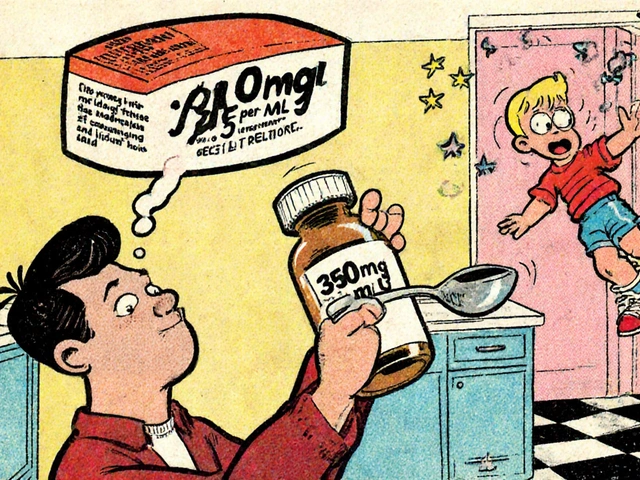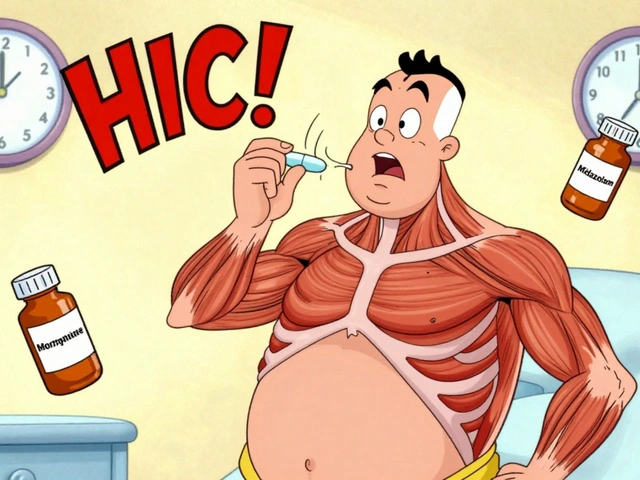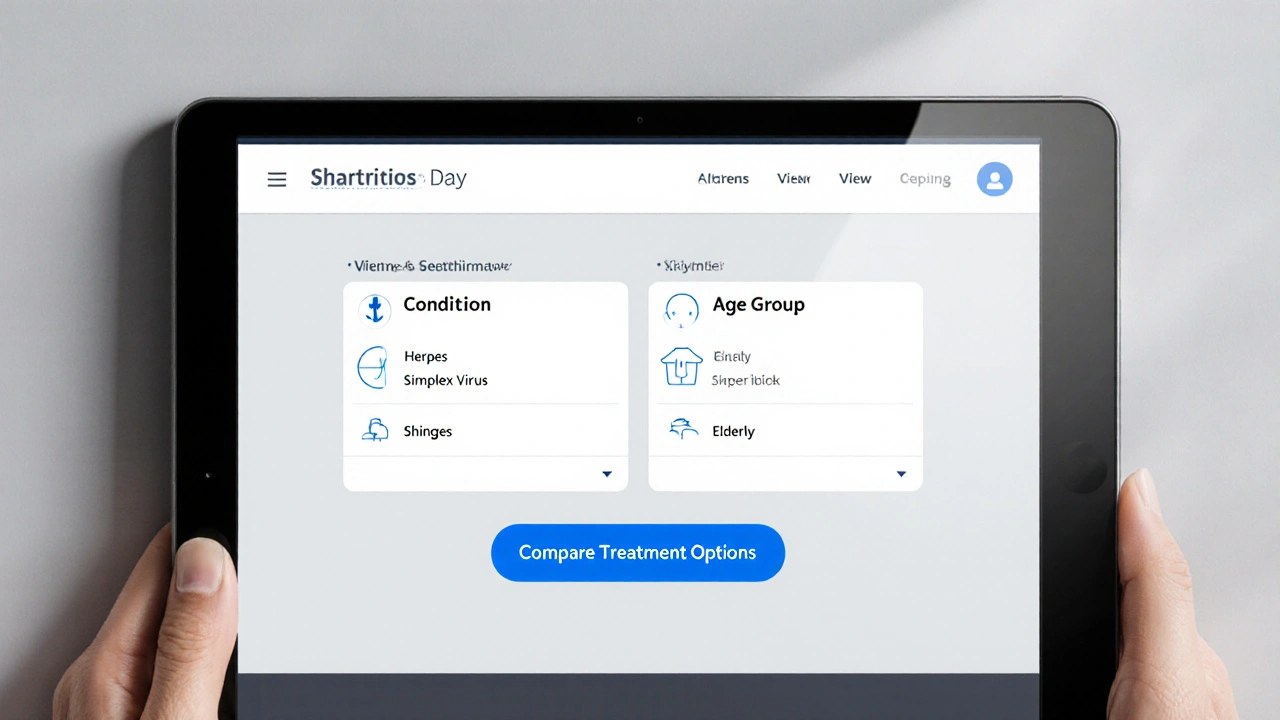
Valtrex vs Alternatives: Antiviral Comparison Tool
Recommended Treatment
Treatment Details
Why This Option?
Quick Take
- Valtrex (valacyclovir) is a prodrug that turns into acyclovir inside your body, giving 3‑4× better oral bioavailability.
- Its main rivals are acyclovir, famciclovir, and topical penciclovir or docosanol.
- For most adults, Valtrex needs only once‑ or twice‑daily dosing, while acyclovir often requires five doses a day.
- Cost varies: generic valacyclovir is cheaper than the brand, but acyclovir remains the lowest‑price option.
- Side‑effect profiles are similar; kidney function should be checked for anyone over 50 or on other nephrotoxic meds.
When you Google "Valtrex alternatives", you’re probably wondering whether another pill will work just as well, cost less, or cause fewer side effects. Below we walk through the science, the real‑world numbers, and the situations where you might pick one drug over another.
Valtrex is a brand name for the antiviral prodrug valacyclovir, used to treat herpes simplex infections and shingles. It was approved by the FDA in 1995 and quickly became popular because a single 1‑gram tablet can replace three to five acyclovir tablets taken throughout the day.
How Valtrex Works (And Why It’s Called a Prodrug)
Valacyclovir itself isn’t the active virus‑killer. Once you swallow the tablet, your liver’s enzymes convert it into acyclovir - the actual molecule that blocks viral DNA polymerase. This conversion boosts oral bioavailability from roughly 15% (plain acyclovir) to about 55%, meaning more of the drug reaches the bloodstream.
Because you get more acyclovir per dose, Valtrex can be taken less often. For an initial outbreak of genital herpes, the typical regimen is 1g twice daily for 10 days. For shingles, it’s 1g three times daily for 7 days. The higher and steadier blood levels also translate into faster lesion healing and shorter viral shedding.
Key Alternatives Overview
Below are the most common antivirals people compare to Valtrex. Each has its own niche, and none are “one‑size‑fits‑all”.
Acyclovir is a first‑generation antiviral that directly inhibits viral DNA synthesis. It’s the backbone of the whole class and is available as both brand (Zovirax) and generic tablets, creams, and ointments.
Famciclovir is a prodrug of penciclovir, offering higher bioavailability than acyclovir but slightly less than valacyclovir. It’s marketed as Famvir in the U.S. and is often used for shingles and recurrent genital herpes.
Penciclovir is a topical antiviral cream approved for cold‑sore treatment. It’s not taken systemically, so it’s only useful for very early lesions on the lips.
Docosanol is a OTC topical agent that blocks viral entry into cells, sold as Abreva. It works best if applied within 12hours of a cold‑sore flare‑up.
Head‑to‑Head Comparison
| Attribute | Valtrex (valacyclovir) | Acyclovir | Famciclovir | Penciclovir (topical) | Docosanol (OTC) |
|---|---|---|---|---|---|
| Formulation | Oral tablet | Oral tablet / topical | Oral tablet | Topical cream (5%) | Topical gel (10%) |
| Bioavailability | ≈55% | ≈15% | ≈77% (as penciclovir) | Local skin penetration | Local skin penetration |
| Dosing frequency | 1‑2×/day | 5×/day | 3×/day | 5×/day (apply q4‑6h) | 5×/day (apply q2‑3h) |
| Typical adult dose (HSV) | 1g BID ×10days | 400mg TID ×7‑10days | 250mg TID ×5‑10days | Apply 5g to lesion Q4‑6h | Apply 5g to lesion Q2‑3h |
| Cost (US, generic) | $0.30‑$0.45 per 500mg | $0.08‑$0.12 per 200mg | $0.25‑$0.35 per 250mg | $0.10 per gram | $0.08 per gram |
| Common side effects | Headache, nausea, renal impact | GI upset, headache | Fatigue, dizziness | Local irritation | Dryness, mild burning |
| Resistance risk | Low, but reported in immunocompromised | Low, similar profile | Low | Negligible (topical) | Negligible |
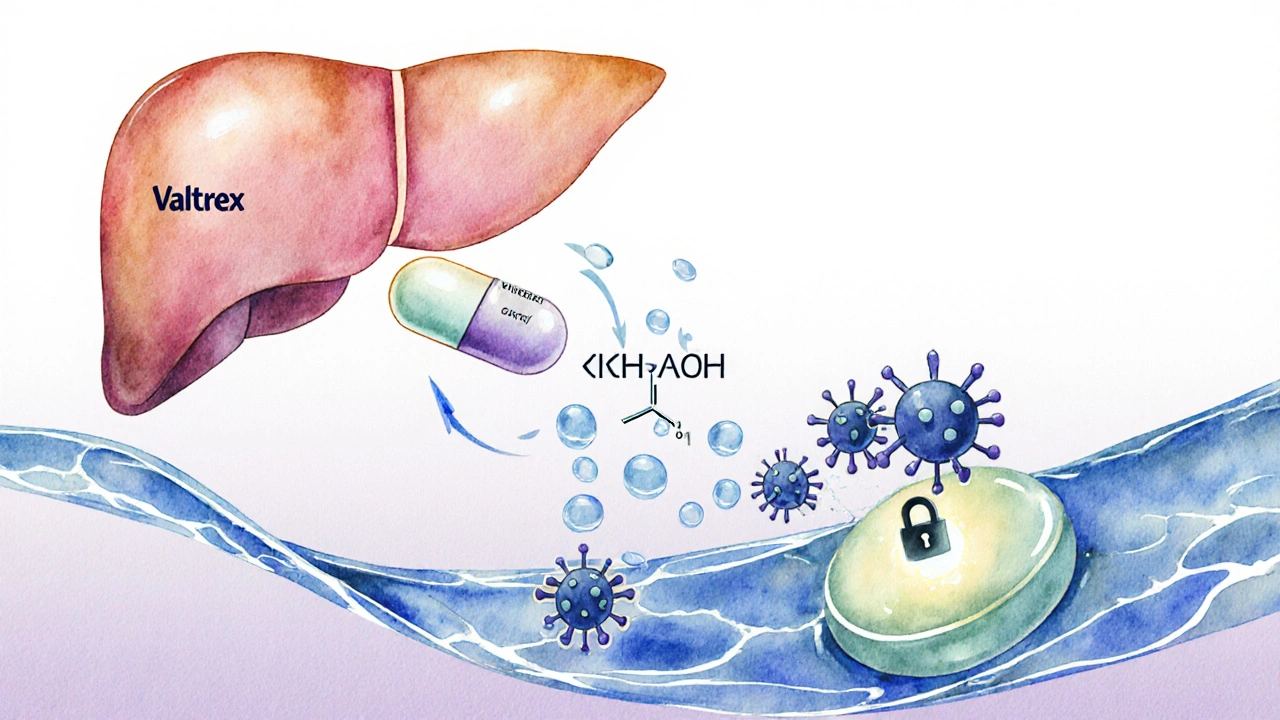
When Valtrex Is Usually the Best Choice
If you need a systemic drug that clears a full‑body outbreak quickly, Valtrex often wins because you only have to swallow one or two pills a day. That matters for busy adults, college students, or anyone who struggles with five‑times‑daily regimens.
Key scenarios where Valtrex shines:
- First‑time genital herpes episode - the higher blood levels speed up healing.
- Shingles in patients over 50 - fewer pills means better adherence, and the drug’s 3‑day dosing is easier on kidneys.
- Pregnant women with recurrent HSV - guidelines allow valacyclovir at 500mg twice daily to reduce transmission risk.
For these cases, the valacyclovir alternatives may be considered only if cost is a prohibitive factor or if a patient has a documented allergy to the prodrug’s excipients.
When Alternatives Might Suit You Better
Even the best drug has trade‑offs. Here are moments when you might pick something else.
- Acyclovir: You’re on a tight budget and can manage a five‑times‑daily schedule. Generic acyclovir is often the cheapest option, especially for long‑term suppressive therapy.
- Famciclovir: You have a rapid‑onset shingles episode and your doctor prefers a 3‑day dosing schedule. Some studies suggest famciclovir may reduce post‑herpetic neuralgia slightly more than valacyclovir in elderly patients.
- Penciclovir Cream: Your outbreak is a cold sore that began <24hours ago. Applying the cream early can shorten lesion duration by about a day compared to doing nothing.
- Docosanol: You want an over‑the‑counter option because you’re undecided about prescription meds. It’s safe for teens and pregnant women.
Cost, Insurance, and Access Considerations
Insurance plans in the UK (NHS) typically list valacyclovir as a prescription‑only medication, but many GP practices will prescribe generic valacyclovir, which is priced similarly to generic acyclovir. In the US, a 30‑day supply of generic valacyclovir runs about $30‑$40, whereas brand Valtrex can be $150 or more.
Some pharmacy discount cards shave 20‑30% off the retail price. If you’re uninsured, the five‑times‑daily acyclovir regimen might still be cheaper overall despite taking more pills.
Safety Tips and Pitfalls to Avoid
Regardless of which drug you use, keep these pointers in mind:
- Hydrate well - antivirals are cleared by the kidneys, and dehydration can raise blood levels.
- Tell your doctor if you take NSAIDs or other nephrotoxic drugs; dose adjustments may be needed.
- Don’t double‑dose when you miss a pill. Just take the next scheduled dose.
- Pregnant or breastfeeding mothers should discuss the safest option; valacyclovir is generally considered safe, but timing matters.
Bottom Line Decision Tree
Use this quick flow to decide:
- Do you need a systemic drug for a full‑body outbreak?
Yes → Go to step2. No → Consider topical penciclovir or docosanol. - Is cost the biggest barrier?
Yes → Choose generic acyclovir (5×/day). No → Continue. - Can you manage twice‑daily dosing?
Yes → Valtrex is likely the most convenient. No → Famciclovir (3×/day) might be a compromise. - Do you have kidney impairment or are you over 70?
Yes → Discuss dose reduction; acyclovir at lower dose may be safer.
Follow the path that matches your lifestyle, budget, and medical history. If you’re still unsure, a short chat with your pharmacist can clear up dosing nuances in minutes.
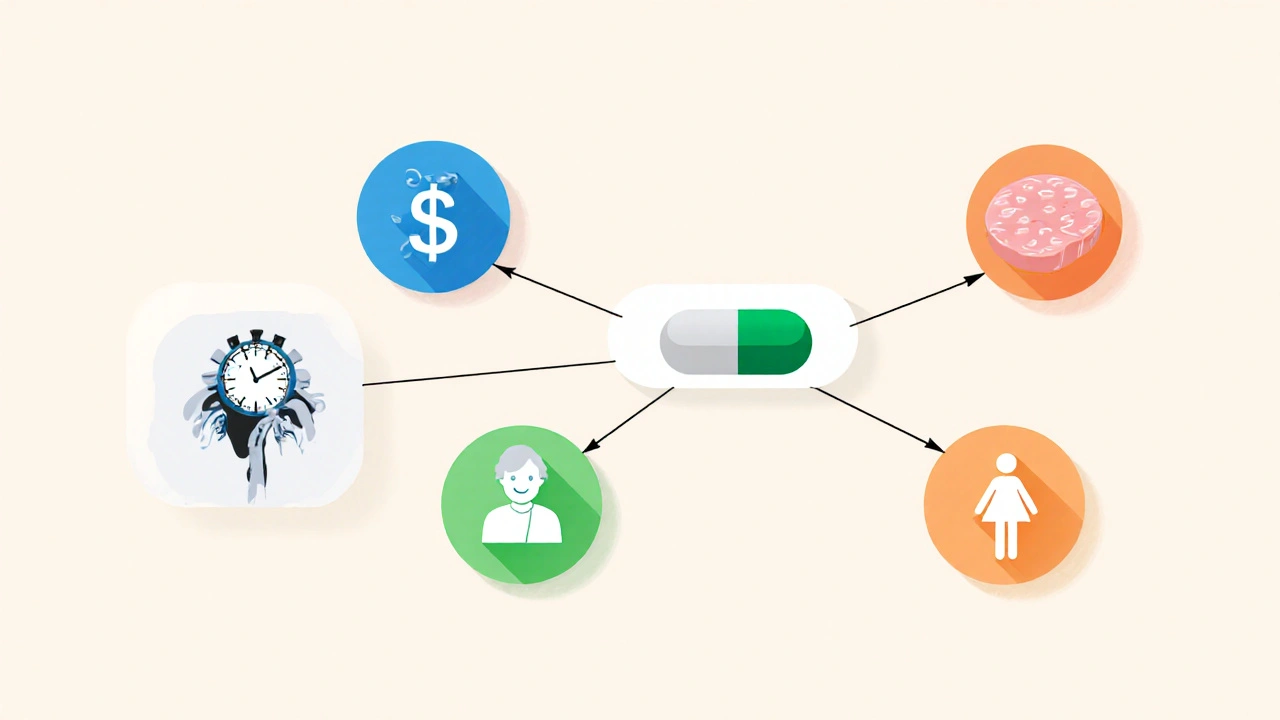
Frequently Asked Questions
Can I switch from Valtrex to acyclovir without a doctor?
No. Although both are antivirals, the dosing schedules differ. Your doctor needs to prescribe the right amount and duration for your specific infection.
Is valacyclovir effective against COVID‑19?
No. Valacyclovir targets herpes viruses specifically. It has no proven activity against SARS‑CoV‑2.
How quickly does Valtrex start working?
Blood levels peak about 1‑2hours after a dose, and most patients notice reduced pain and faster lesion healing within 2‑3days.
Can I take Valtrex while breastfeeding?
Studies show low levels pass into breast milk, and most pediatricians consider it compatible with breastfeeding if the mother needs treatment.
What should I do if I miss a Valtrex dose?
Take the missed tablet as soon as you remember, unless it’s almost time for the next dose. In that case, skip the missed one and continue with the regular schedule. Don’t double‑dose.

